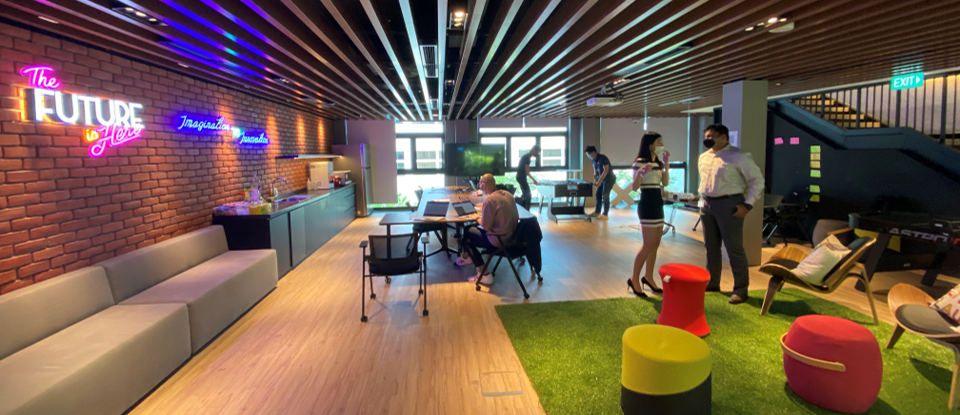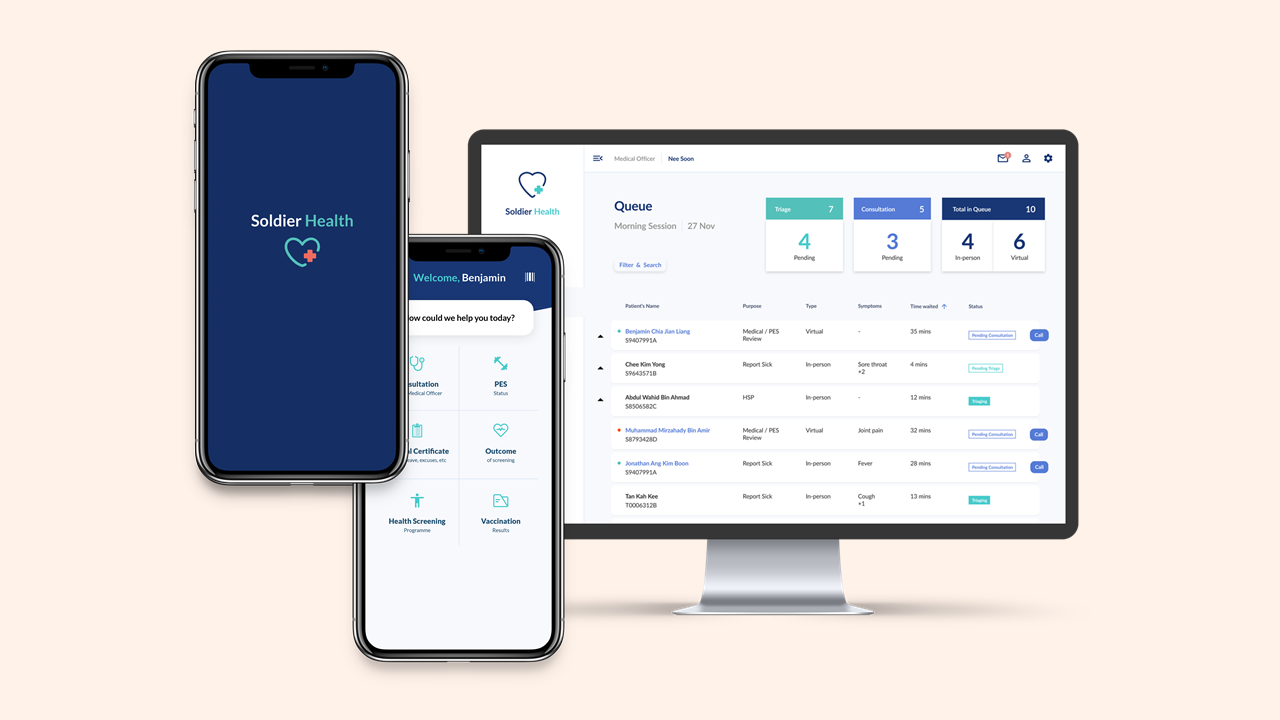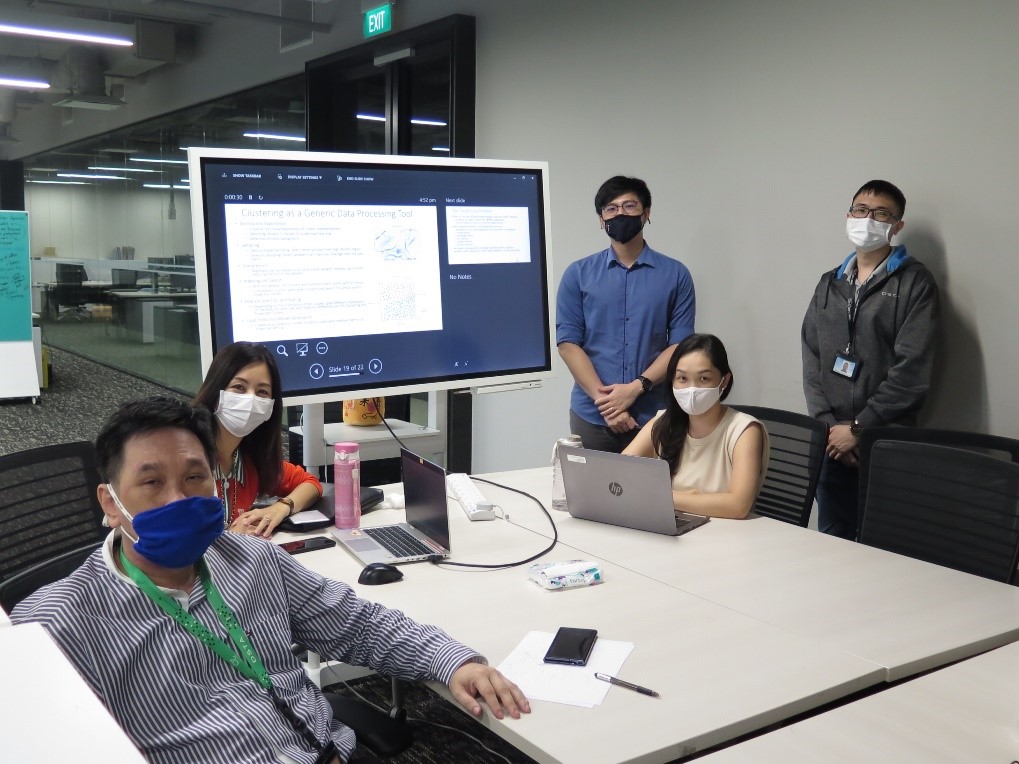What happens when an organisation wants to find new ways to deliver IT solutions, enable business and digital transformations, partner industry experts on the latest tech, create a space to collaborate, and operationalise digital-first products that can change the business?
You’ll get the Digital Factory!

To this end, Digital Factory comes with a variety of engineering expertise and resources. It is also set up in such a way to encourage agile development, which promotes short iterations called sprints in a development lifecycle and allows product teams to reprioritise requirements quickly. This is a step away from the conventional waterfall method, where projects are split into long milestones.
Digital Factory is also well equipped with many useful tools, including a technology stack and a common digital platform.
“We want to be able to develop digital solutions at an enterprise scale effectively, as part of a digital-first approach to drive business transformation for MINDEF and the SAF. To do so, we have built a ‘digital highway’ that comes with a technical platform and established processes to accelerate product development,” said Director (Digital Factory) Koh Jin Hou.
The platform consists of a continuous integration and continuous delivery (CI/CD) pipeline – an automated workflow that detects cybersecurity vulnerabilities and reviews code quality – and a suite of enterprise common services (ECS). With this, the pipeline reduces the amount of arduous manual testing needed, and accelerates the delivery of product capabilities. As a specially curated suite of common enterprise-level technical components for frequently used features, ECS can help speed up development, avoid duplicative efforts, and ensure coherency of functionalities across digital products.

With its robust pipeline and processes, the platform is aligned with our technology stack and qualified through collaboration with cybersecurity agencies in MINDEF and the SAF. As such, product teams can be assured that their products are built with speed and remain cybersafe, without compromising quality.
Beyond the technical platform, Digital Factory also provisions various resources such as hardware, development tools, and space, thereby allowing product owners to focus on product development. The product owners are supported by a policy enablement team that manages organisational-level impediments for policy/process re-engineering to achieve business transformation.
And no collaborative space would be complete without the key drivers – people! Getting end users to come together under one roof with product developers and designers to work together on designing, testing and scaling secure digital solutions ensure that the final products are user friendly and cater to different target audiences. To achieve this, Digital Factory adopts an open concept and encourages hot desking, while people talk and share ideas in a vibrant environment that stimulates creativity.

Various business domains have already benefited from this close collaboration. In the medical domain, the Soldier Health Team, which consists of a mix of personnel from the SAF, DSTA and IBM, has leveraged Digital Factory’s resources to develop a digital mobile healthcare platform for MINDEF and the SAF. The Soldier Health Minimum Viable Product (MVP) gives our soldiers the option to do telemedicine calls for simple medical conditions with the SAF’s Medical Officers directly through the mobile app.
For the product manager and Senior Engineer (Enterprise IT) Lee Ming En, working with IBM has been a valuable experience. He said: “Digital Factory allows us to bring together the business and technology aspects for greater project synergy. There is also a lot of support from our management to improve current processes, shift security paradigms and make risks trade-offs. These help us create a better product for our end users.”
“Every team member contributes their wide range of experience, and this generates a lot of dynamism for the team,” said Major (Doctor) Aaron Chua, who works closely with Ming En and his team.
By enabling such well-knitted and agile ops-tech collaboration, Digital Factory facilitates a better understanding of business and technology issues, improves decision-making for designs, and strengthens long-term ops-tech relationships.

In addition, Digital Factory also engages industrial and academic experts to tap their expertise in their appointed roles as Distinguished Engineers and Professors. Through these appointments, they provide technical leadership and guidance in architecture design patterns for cloud modernisation, DevSecOps implementation, and help refine existing methodologies and approaches for data science projects.
In particular, Distinguished Engineers act as consultants for tech domains within their expertise by sharing industrial best practices, as well as providing assessments and guidance for our project approaches and implementations.

Our project team meeting up with a Distinguished Professor.
On the other hand, appointed Distinguished Professors provide technical coaching to various teams in areas such as time series and trajectories analytics, and guide project teams in identifying and managing risk areas and key factors in their projects.
For many MINDEF and the SAF personnel, Digital Factory partners them in their first foray into a new way of developing applications, and allows them to experience first-hand the value that agile development, cloud technologies and ops-tech integration can bring.